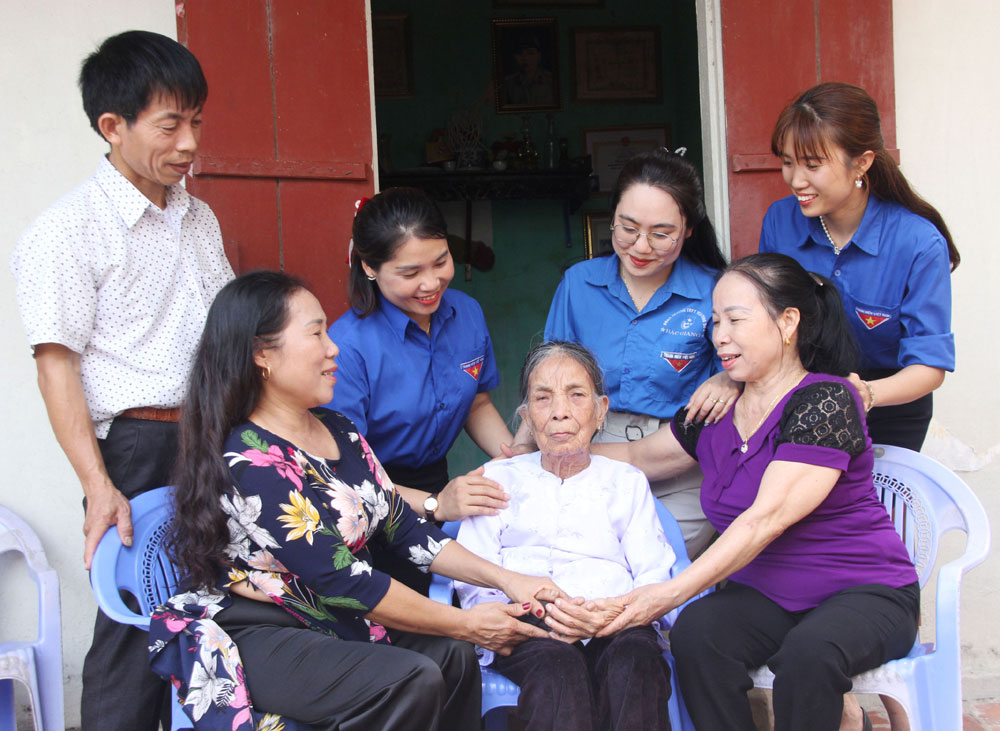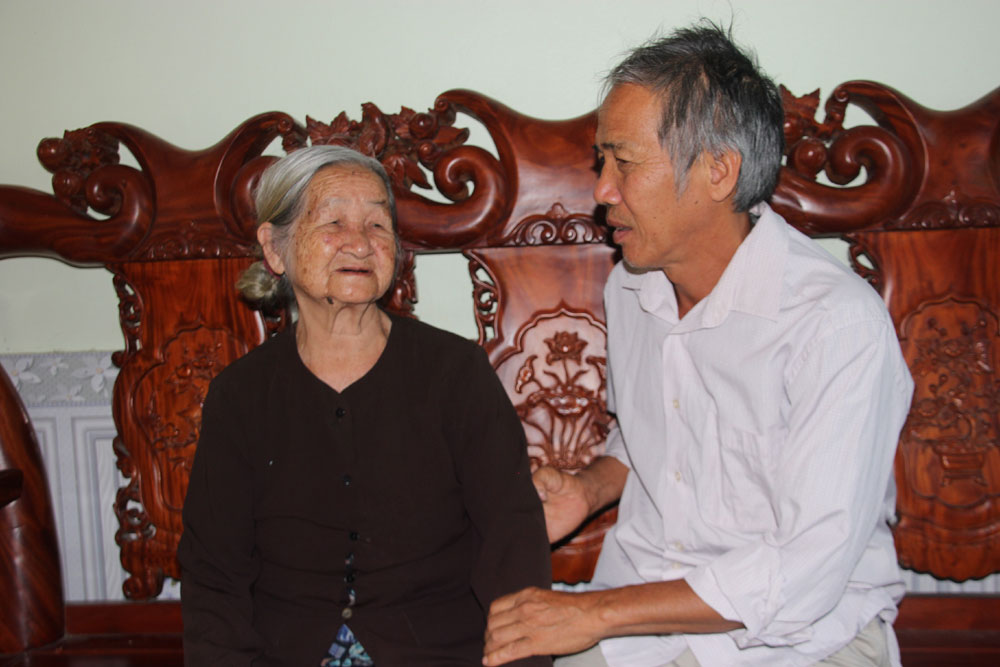Drawing the shape of the country
"Mothers’ tears run out"
In a late afternoon of May, I and a women’s union official in Thai Dao commune (Lang Giang district) visited the family of Mother Tang Thi Khi (born in 1926) in Mau village. She has nine children (seven sons, two daughters), of them four sons volunteered to join the army.
 |
|
Mother Tang Thi Khi and her children, youth union members in Thai Dao commune, Lang Giang district. |
At the time when the US troops attacked Vietnam fiercely, the whole country was overwhelmed with the spirit of eagerly providing human and material resources for the South. The mother's children in their youth also set out in turn.
The time has weakened the mother’s health. Her eyes are dim, but in her memory, she never forgets the image of the four sons going to the battlefields, with only two returning home. Martyr Nguyen Ngoc Cuong (born in 1944) enlisted in the army in 1965 and martyr Nguyen Ngoc Dau (born in 1949) join the military in February 1968. They all fought in the southern battlefields.
The certificates recognising their dedication to the Fatherland was solemnly hung in the house by the Mother. Her sons fell on the battlefields for other people to live in peace and independence. Therefore, every day, she always tries to live a healthy and happy life. Despite her old age, she still cooks, cleans the house, and encourages her children and grand children to work hard and actively contribute to society.
|
Bac Giang province has nearly 1,400 Heroic Vietnamese Mothers, of whom 24 are still alive. The youngest is 80 years old and the oldest turns 104. Thanks to the Party's policy on taking care of policy beneficiary families and people with meritorious services to the revolution, Heroic Vietnamese Mothers are taken care of by their children and grand children, as well as nurtured by agencies and units. |
Duoc and Tu returned to work as officials of the communal People's Committee and cooperative, making many contributions to their homeland. Dozens of her grand children are all grown up, with some working in businesses, some being business people, and others graduating from universities and colleges.
Mother Khi boasted: "I am taken care of by staff at the provincial Fatherland Front Committee. On holidays, Tet (Lunar New Year) or death anniversaries of her sons, leaders and officials of the agency came to visit and encourage me. I lost two children but have many others!"
Husband and child are both martyrs
When the war ended, Heroic Vietnamese Mother Ngo Thi Mun (born in 1938) in Cau Moi village, Ngoc Van commune (Tan Yen district) quietly looked at the photos of her husband and child because they never returned. Her husband is martyr Bui The Tien (born in 1937) and her son is martyr Bui The Luc (born in 1957).
The Mother's husband and child died in 1971 and 1977 in the southwest battlefield. Her husband enlisted in the army in 1965 and then marched to the battlefield in the South. At that time, their youngest son was not born yet.
 |
|
Mother Ngo Thi Mun and her son. |
Between 1968 and 1972, the enemy bombarded the North intensely, the villages suffered from rains of bombs and bullets. Lacking rice to feed the soldiers, Mother Mun and many other women got up at midnight to grow rice, both serving the struggle against the enemy in the South and raise their children.
In 1976, she shed tears when receiving the notice informing her husband’s death. In 1977, following the sacred call of the Fatherland, the Mother's eldest son left home to join a delegation of Vietnamese volunteer soldiers to help Cambodia. A short time later, when he and his team mates were on the march, they were heavily bombed by the enemy’s helicopters. Many of the platoon members fell down and her son was among them.
Going through many hardships, now the Mother can see her hometown changing every day. Her children and grand children are all grown up, all have stable jobs and are ready to participate in local activities.
Overcoming the pain of losing husbands and children, the Mothers have become symbols of patriotism. Their figures have been carved into the shape of the country today.
 Bắc giang
Bắc giang















Reader's comments (0)